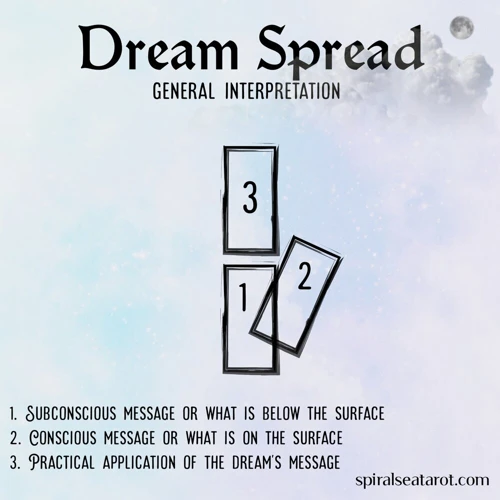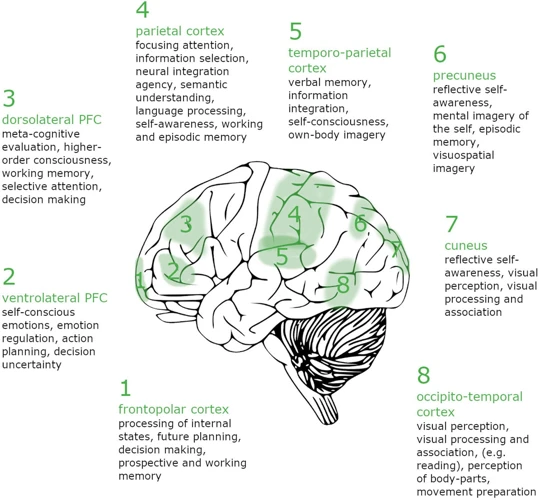Imagine a world where you have the power to control your wildest dreams. A realm where you can fly through the sky, explore mystical landscapes, and interact with characters from your imagination. Welcome to the fascinating realm of lucid dreaming, a state in which you become aware that you are dreaming and can manipulate the dream world to your liking. In this comprehensive guide, we will delve into the secrets of navigating the dream world and provide you with step-by-step techniques to gain control over your lucid dreams. So, buckle up and prepare to embark on an extraordinary journey through your own subconscious mind.
Contents
- Understanding Lucid Dreams
- Preparing for Lucid Dreaming
- Techniques for Navigating the Dream World
- Enhancing Control in Lucid Dreams
- Conclusion
-
Frequently Asked Questions
- 1. How can I tell if I’m having a lucid dream?
- 2. Can anyone learn to have lucid dreams?
- 3. Are lucid dreams dangerous?
- 4. How can I improve my dream recall?
- 5. Can lucid dreaming be used for problem-solving?
- 6. How long does it take to have a lucid dream?
- 7. Can lucid dreaming help with overcoming nightmares?
- 8. Can medications affect lucid dreaming?
- 9. Is lucid dreaming the same as astral projection?
- 10. Can lucid dreaming be physically tiring?
- References
Understanding Lucid Dreams

Lucid dreams are dreams in which the dreamer is aware that they are dreaming while still in the dream state. Unlike regular dreams where the dreamer is a passive observer, lucid dreams provide a sense of control and self-awareness. It’s almost like having a foot in both the waking and dreaming worlds. In a lucid dream, you can consciously steer the course of events, manipulate the dream environment, and even interact with dream characters. These dreams can range from fleeting moments of awareness to immersive experiences where you have complete control over your actions and surroundings.
Exploring the realm of lucid dreaming offers a plethora of benefits that extend beyond mere entertainment. One significant advantage is the ability to tap into your creativity and imagination in unprecedented ways. Lucid dreaming allows you to actively participate in your dreams, opening up avenues for artistic inspiration, problem-solving, and personal growth. Additionally, lucid dreaming can be a valuable tool for self-exploration and gaining insight into your subconscious mind. By analyzing recurring dream symbols or confronting fears in a controlled environment, you can gain a deeper understanding of yourself. For those seeking to cultivate skills or enhance performance, lucid dreaming can be a powerful platform for mental rehearsals and practice. Whether you’re an artist, an athlete, or simply curious about the mysteries of the mind, lucid dreaming offers a thrilling and transformative adventure. To learn more about the different levels of lucid dreaming, check out our article on Lucid Dreaming Levels.
What are Lucid Dreams?
- Awareness: In a lucid dream, you are aware that you are dreaming while still inside the dream. This self-awareness sets lucid dreams apart from regular dreams.
- Control: Lucid dreams grant you the ability to control and manipulate various aspects of the dream, including the dream environment, your actions, and interactions with dream characters.
- Clarity: Unlike the sometimes hazy and fragmented nature of regular dreams, lucid dreams often have a heightened sense of clarity, making the dream world feel more vivid and real.
- Memory: Lucid dreams are more likely to be remembered upon waking up, allowing you to recall and reflect on the dream experience in greater detail.
Exploring the world of lucid dreams can be an awe-inspiring and transformative journey. To discover some practical techniques for inducing lucid dreams, check out our article on Practical Lucid Dreaming Techniques. For those interested in the scientific aspects of lucid dreaming, delve into our article on The Science Behind Lucid Dreaming.
The Benefits of Lucid Dreaming
The benefits of lucid dreaming extend far beyond mere entertainment. Lucid dreams provide a unique opportunity for personal growth, exploration, and even problem-solving. One of the most prominent advantages is the ability to harness and unleash your creativity. In a lucid dream, you have the freedom to explore uncharted territories, interact with dream characters, and manipulate the dream environment in ways that defy the laws of physics. This unrivaled creative playground allows artists, writers, and musicians to tap into their subconscious and unlock a wellspring of inspiration. Additionally, lucid dreaming can serve as a platform for self-discovery and introspection. By analyzing recurring dream symbols or confronting fears, you can gain valuable insights into your subconscious mind and work towards personal development. Another remarkable benefit is the potential for mental rehearsal and skill-building. Athletes, students, and professionals can utilize lucid dreaming to practice scenarios, refine physical abilities, and enhance performance in a safe and controlled environment. The potential applications of lucid dreaming are vast, offering a gateway to personal growth, self-exploration, and unleashing the full potential of the human mind. To learn more about practical techniques for lucid dreaming, check out our article on Practical Lucid Dreaming Techniques.
Preparing for Lucid Dreaming

One of the essential steps in preparing for lucid dreaming is maintaining a dream journal. Keep a notebook or use a smartphone app to write down your dreams as soon as you wake up. This practice helps improve dream recall and trains your mind to pay closer attention to the details of your dreams. Include vivid descriptions, emotions, and any recurring themes or symbols you notice. Over time, you will develop a better understanding of your dream patterns and increase your chances of recognizing when you are in a dream state.
Another crucial aspect of preparation is incorporating reality checks and reality testing into your daily routine. Throughout the day, pause and question your reality by performing simple checks like looking at your hands, trying to push your finger through your palm, or checking the time. These reality checks will become habitual, and eventually, you’ll perform them in your dreams as well. In dreams, the results of reality tests often differ from waking reality, which can trigger lucidity. Consistent practice of reality checks will increase your chances of becoming aware while dreaming.
Setting clear dream intentions before going to sleep can significantly enhance the likelihood of having a lucid dream. Spend a few minutes before bedtime focusing your mind on the desire to become lucid in your dreams. Visualize yourself recognizing that you are dreaming and imagine the exhilaration and control that comes with it. Repeat affirmations such as “I will be aware that I’m dreaming” to reinforce your intentions. By priming your mind to recognize and embrace lucidity, you send a powerful message to your subconscious, increasing the chances of experiencing lucid dreams.
By incorporating these preparation techniques into your daily routine, you will lay a strong foundation for venturing into the world of lucid dreaming. It’s important to be patient and persistent, as maximizing dream recall and achieving lucidity takes practice. The next section will explore different techniques you can use to navigate the dream world once you’re on the path to lucid dreaming.
Maintaining a Dream Journal
To enhance your ability to have lucid dreams, start by maintaining a dream journal. Keeping a record of your dreams is an essential practice for anyone interested in exploring the realm of lucid dreaming. The process is simple: as soon as you wake up, grab a pen and notebook or use a digital journaling app to jot down every detail you can remember from your dreams. This includes the storyline, characters, emotions, and any specific elements that stood out. By engaging in this habit of recording your dreams, you are training your brain to pay closer attention to your dream experiences, increasing your dream recall abilities over time.
The act of maintaining a dream journal also enables you to identify common dream themes, patterns, and symbols that occur in your dreams. These insights can serve as valuable cues that you are dreaming while in the dream state. For example, if you frequently dream of flying, seeing certain people, or being in specific locations, noting these patterns will help you recognize when you’re dreaming. By recognizing these patterns through your dream journal, you can perform reality checks and trigger lucidity.
To make the most of your dream journaling practice, make sure you keep it consistent. Dedicate a few minutes each morning to record your dreams, even if you only remember fragments. Over time, this practice will sharpen your dream recall and increase your chances of having lucid dreams. So, grab that journal and pen, or open that dream journaling app, and unlock the door to your dream world.
Reality Checks and Reality Testing
Reality checks and reality testing are essential practices for anyone looking to cultivate lucid dreaming abilities. These techniques involve questioning the nature of reality and assessing whether you are in a dream or awake state. By developing a habit of performing reality checks throughout your waking hours, you increase the likelihood of carrying out these checks during your dreams as well.
There are several effective reality checks you can incorporate into your daily routine. One popular method is to examine your hands. In a dream, hands can often appear distorted or unusual. By regularly glancing at your hands and asking yourself, “Am I dreaming?” you can improve your odds of recognizing when you are in a dream state. Another common reality check is attempting to push your finger through your palm. In a dream, this action is likely to result in your finger passing through, while in reality, it will meet resistance.
Another effective reality testing technique involves questioning the consistency of your surroundings. Throughout the day, make it a point to ask yourself if your current environment aligns with what you would expect in real life. Look for any odd or out-of-place details, as dreams often contain inconsistencies or surreal elements.
To reinforce the effectiveness of reality checks, it’s crucial to maintain a sense of skepticism and truly question your reality during waking hours. This skepticism will carry over into your dreams, increasing the likelihood of becoming aware when you are dreaming. Consistency and repetition in conducting reality checks are key. Consider setting reminders throughout the day as cues to perform these assessments. Over time, you will strengthen the connection between reality checking and your dream state, ultimately paving the way to lucid dreaming mastery. For more practical techniques to enhance your lucid dreaming abilities, check out our article on Practical Lucid Dreaming Techniques.
Setting Dream Intentions
When it comes to navigating the dream world and achieving lucidity, setting dream intentions plays a crucial role. Dream intentions are essentially the goals or desires you set before entering the dream state. By planting these intentions in your mind, you increase the likelihood of becoming aware that you are dreaming. Here are some techniques to help you effectively set dream intentions:
1. Affirmations: Repeat positive statements or affirmations related to lucid dreaming before going to sleep. These affirmations can be as simple as “I will become lucid in my dreams” or “I am aware that I am dreaming.”
2. Visualization: Spend a few minutes visualizing yourself in a lucid dream. Imagine the vivid details, the sensations, and the thrill of being aware in the dream world. Visualize yourself becoming lucid and successfully exploring your dreams.
3. Dream incubation: Just before falling asleep, focus your thoughts on a specific dream scenario or theme. It could be flying, meeting a specific person, or visiting a dream location. Repeat this desired scenario in your mind, allowing it to become deeply ingrained in your subconscious.
By practicing these techniques consistently, you are actively programming your mind to be more receptive to the concept of lucid dreaming. Additionally, maintaining a regular sleep schedule, getting enough rest, and reducing stress can significantly enhance your success in setting dream intentions. To further enhance your lucid dreaming practice, consider incorporating reality checks and reality testing into your routine. These techniques help you question your state of reality and increase the chances of becoming lucid. To learn more about reality checks and their application, check out our article on Practical Lucid Dreaming Techniques.

Techniques for navigating the dream world are essential tools that can help you achieve lucidity in your dreams and maintain control once you become aware. There are several tried and tested methods that you can incorporate into your practice to increase your chances of having lucid dreams.
One of the most widely used techniques is the Mnemonic Induction of Lucid Dreams (MILD) method. With MILD, you train your mind to remember that you want to have a lucid dream. Before falling asleep, repeat a mantra or affirmation such as “I will have a lucid dream” to program your mind. Visualize yourself becoming aware within a dream and performing reality checks. This technique enhances your prospective memory and increases the likelihood of lucid dreaming.
Another technique to explore is Wake-Induced Lucid Dreams (WILD). This method involves maintaining awareness as you transition from full wakefulness to the dream state. To practice WILD, find a comfortable position and relax your body. Focus on staying mentally alert while allowing your body to fall asleep. As you enter a hypnagogic state, characterized by vivid hallucinations or sensations, actively maintain consciousness and step into the dream world with clarity and lucidity.
If you prefer a more spontaneous approach, you can work on developing Dream-Initiated Lucid Dreams (DILD). With DILD, the goal is to perform reality checks consistently throughout the day. By making reality testing a habit, you are more likely to question your reality while dreaming. When you perform a reality check in your dream and realize you are dreaming, you can then take control and navigate your lucid dream.
Each of these techniques has its own unique advantages and may resonate differently with individuals. Experiment with different methods to see which work best for you. Remember that patience and persistence are key in developing your lucid dreaming skills. To dive deeper into practical techniques, make sure to explore our detailed article on Practical Lucid Dreaming Techniques for step-by-step instructions and tips.
Mnemonic Induction of Lucid Dreams (MILD)
is a popular technique used to induce lucid dreams. This technique focuses on improving dream recall and enhancing the dreamer’s ability to become aware within a dream. The first step in practicing MILD is to maintain a dream journal. Keep a notebook and pen next to your bed and make it a habit to write down your dreams as soon as you wake up. This helps improve your dream recall, making it easier to recognize dream patterns and trigger lucidity.
The next step in MILD is to perform reality checks and reality testing throughout the day. This involves regularly questioning whether you are dreaming or awake. Perform simple checks like trying to push your finger through your palm, looking at a clock to see if the numbers change, or jumping to see if you float. By making a habit of questioning your reality, you’ll increase the likelihood of doing the same in your dreams, ultimately leading to lucidity.
As you drift off to sleep at night, prepare your mind with a dream intention. Mentally repeat a phrase or affirmation, such as “I will realize I am dreaming” or “I will lucid dream tonight.” Visualize yourself becoming aware and in control within a dream. This primes your mind to actively seek out lucidity during your nightly adventures.
During the night, set an intention to wake up after each dream. As soon as you wake up from a dream, lie still with your eyes closed and try to recall the dream in as much detail as possible. Then, while still in a somewhat drowsy state, visualize yourself back in the dream but this time becoming lucid and aware. Repeat your dream intention and affirmations, allowing the visualization to become vivid in your mind. You can then drift back to sleep, keeping your awareness focused on lucid dreaming.
The MILD technique is especially effective when combined with the practice of Wake-Back-to-Bed (WBTB) method. Set an alarm to wake you up about 4-5 hours after you initially fall asleep. Stay awake for a short period, engaging in activities related to lucid dreaming, such as reading about lucid dreams or practicing reality checks. This waking period increases your alertness and primes your mind for lucidity.
With practice and consistency, the MILD technique can greatly enhance your ability to have lucid dreams. It is a versatile and accessible method that can be easily incorporated into your daily routine. So, grab your dream journal, start questioning your reality, and get ready to unlock the extraordinary world of lucid dreaming! For more practical techniques to induce lucid dreams, check out our article on Practical Lucid Dreaming Techniques.
Wake-Induced Lucid Dreams (WILD)
is a technique that involves transitioning directly from a waking state into a lucid dream. This method requires practice and patience, but it can lead to incredibly vivid and immersive lucid dream experiences. Here’s a step-by-step breakdown of how to achieve a WILD:
- Prepare for sleep: Get into a comfortable position in bed and relax your body and mind. It’s essential to be well-rested before attempting a WILD.
- Enter a hypnagogic state: As you begin to fall asleep, keep your mind awake while allowing your body to drift into a state of relaxation. Focus your attention on the sensations that arise as you transition from wakefulness to sleep.
- Maintain awareness: As you enter the hypnagogic state, you may start to experience dream-like images, sounds, or sensations. Stay mentally alert and observe these phenomena without getting too attached or fully engaging with them.
- Visualize the dream: Begin to visualize a specific dream scenario or environment that you’d like to enter. Imagine yourself becoming an active participant in this dream world.
- Step into the dream: As the hypnagogic state deepens, you may start to feel a separation between your physical body and the dream environment. This is the moment to step into the dream consciously.
- Engage your senses: Once you’re fully immersed in the lucid dream, you can begin to explore and interact with the dream environment. Engage your senses to enhance the realism and clarity of the experience.
- Maintain lucidity: It’s essential to stay calm and focused to prevent yourself from waking up or losing awareness within the dream. Techniques such as spinning in circles or rubbing your hands together can help stabilize the dream.
- Enjoy the experience: Take advantage of the control you have over the dream world. Fly, explore, and engage with dream characters. Embrace the limitless possibilities of your lucid dream.
While the WILD technique can be challenging, with practice, it can become a powerful tool for entering lucid dreams directly from a waking state. Experiment with different approaches and find what works best for you. To learn more about other techniques for lucid dreaming, check out our article on Practical Lucid Dreaming Techniques.
Creating a Dream-Initiated Lucid Dreams (DILD)
Creating a Dream-Initiated Lucid Dream (DILD) involves using specific techniques to trigger lucidity while already in a dream. This method relies on increasing your self-awareness and questioning your reality during your daily life, which then carries over into your dream state. There are several effective techniques for inducing DILDs.
One popular approach is implementing reality checks throughout the day. This involves performing simple actions or observations to determine whether you are in a dream or waking reality. Common reality checks include trying to push your finger through your palm, checking the time twice in quick succession, or looking at a written text and then looking away and back to see if it has changed. By making a habit of performing these reality checks during your waking hours, you will start to do them automatically in your dreams, leading to lucidity.
Another method to promote DILDs is known as setting dream intentions. This technique involves mentally affirming your desire to become lucid in your dreams before falling asleep. You can repeat a mantra or affirmations such as “I will remember that I’m dreaming” or “I will recognize when I’m in a dream.” By focusing your mind on lucid dreaming before sleep, you increase the likelihood of having a DILD.
Keeping a dream journal is another essential component of DILD induction. Regularly recording your dreams immediately upon waking helps in developing dream recall and recognizing patterns or recurring themes. This heightened dream awareness carries over into your dream state, increasing the chances of becoming lucid.
To summarize, creating a Dream-Initiated Lucid Dream involves implementing reality checks, setting dream intentions, and maintaining a dream journal. By incorporating these techniques into your routine, you will enhance your self-awareness and increase the likelihood of experiencing lucid dreams. Keep in mind that practicing patience and consistency is key when mastering the art of lucid dreaming.
Enhancing Control in Lucid Dreams
Once you have achieved lucidity in a dream, the next step is to enhance your control over the dream world. To fully immerse yourself and make the most of your lucid dreaming experience, here are some effective techniques to enhance control in your dreams.
One key aspect of maintaining control is stabilizing the dream environment. Lucid dreams can sometimes be unstable, causing the dream world to quickly fade away or shift unpredictably. To stabilize the dream, engage your senses to ground yourself in the dream environment. Rub your hands together, touch and observe objects in the dream, or focus on your breathing. These actions help to stabilize the dream and prevent it from slipping into a non-lucid state.
Another technique for control is to employ dream control techniques. This involves actively manipulating elements of the dream to fit your desires. You can summon or transform objects, change the scenery, or even alter the laws of physics within the dream. To practice dream control, visualize your desired changes in detail and expect them to happen. By believing in your ability to control the dream, you can manifest your intentions and shape the dream world to your liking.
While it may be tempting to dive into exciting adventures immediately, it’s important to remember that control in lucid dreaming requires practice and patience. Like any skill, it takes time to master. Start by setting small, realistic goals in your dreams and gradually work your way up to more complex actions. Keep a positive mindset and celebrate even the smallest achievements. With consistent practice and a willingness to explore, you’ll find that your control over the dream world will improve over time.
Enhancing control in lucid dreams is an exhilarating process that offers endless possibilities for self-discovery and adventure. By stabilizing the dream environment, utilizing dream control techniques, and persevering through practice, you can unlock greater levels of control and fully embrace the wonders of the dream world. So, go forth and let your imagination run wild in the realm of lucid dreams!
Stabilizing the Dream Environment
Stabilizing the dream environment is a crucial step in maintaining control and enhancing the clarity of your lucid dreams. When you first become lucid, the dream world can be highly unstable, causing the vividness of the dream to waver and potentially leading to waking up. To prevent this, there are several techniques you can employ to stabilize the dream environment.
One effective method is to engage your senses within the dream. Take a moment to observe your surroundings in detail, focusing on the sensory aspects of the dream. Look closely at the objects, feel their texture, and listen to the sounds around you. By actively engaging your senses, you anchor yourself in the dream and reinforce your lucidity.
Another technique is to interact with the dream environment. Rub your hands together or touch solid surfaces in the dream; this physical stimulation can help solidify the dream experience. Additionally, spinning in place or engaging in gentle movements can create a sense of stability within the dream.
Maintaining a calm and focused mindset is also essential for stabilizing the dream environment. Avoid getting too excited or overwhelmed, as intense emotions can destabilize the dream. Instead, remind yourself that you are in control and that you have the power to navigate the dream world.
Lastly, grounding yourself with deep breathing exercises can help stabilize the dream environment. Take slow, deep breaths and focus on your breath as a way to anchor yourself in the dream and maintain stability.
By implementing these techniques, you can enhance the stability and vividness of your lucid dreams, allowing for prolonged and more immersive dream experiences. For more practical techniques and tips on lucid dreaming, check out our article on Practical Lucid Dreaming Techniques.
Using Dream Control Techniques
Dream control techniques play a crucial role in enhancing your ability to manipulate and shape your lucid dreams. Here are some effective techniques to help you harness control over your dream environment:
1. Reality Shifting: This technique involves consciously altering aspects of your dream world. You can experiment with changing the scenery, the weather, or even the laws of physics. For example, you can imagine yourself in a tropical paradise, surrounded by palm trees and crystal-clear blue water. By visualizing and believing in the new reality, you can seamlessly transform your dream environment.
2. Summoning: With this technique, you have the power to summon specific objects, people, or even fictional characters into your dreams. Imagine meeting your favorite celebrity, having a conversation with a historical figure, or exploring ancient ruins alongside Indiana Jones. By focusing your intention on the desired person or item, you can manifest them within your lucid dream.
3. Telekinesis: In a lucid dream, you can exercise control over the laws of physics, including the ability to move objects with your mind. Picture yourself effortlessly lifting and manipulating objects in your dream by sheer thought power. You can practice telekinesis by visualizing objects floating, spinning, or being influenced by your mental commands.
4. Time Manipulation: Lucid dreams offer the opportunity to bend time to your will. You can slow down the passage of time, allowing for extended dream experiences, or accelerate time to fast-forward through certain dream scenarios. By consciously intending and visualizing the desired time manipulation, you can alter the dream’s temporal flow.
5. Shape-shifting: This fascinating technique allows you to transform your physical appearance or morph into different creatures or objects within your lucid dream. You can experience the sensation of soaring through the sky as a bird, diving into the depths of the ocean as a dolphin, or immersing yourself in the perspective of a majestic oak tree. Embrace your imagination and visualize your desired transformation, letting your dream self take on a new form.
Remember, mastering dream control techniques requires practice and experimentation. Regular reality checks, visualization exercises, and intention setting can significantly enhance your control and lucidity in dreams. With patience and persistence, you can become a skilled navigator of the dream world, transforming your nighttime adventures into awe-inspiring and transformative experiences.
Exploring the Dream World: Practice and Patience
Exploring the dream world requires practice and patience. While lucid dreaming can be an exhilarating experience, it is important to remember that mastering control over your dreams takes time and dedication.
One of the first steps in exploring the dream world is to continuously practice awareness during your waking hours. By regularly performing reality checks throughout the day, such as asking yourself if you are dreaming and examining your surroundings for any inconsistencies, you can train your mind to be more alert in the dream state. This increased awareness will eventually carry over into your dreams, increasing the likelihood of becoming lucid.
In addition to reality checks, it is crucial to maintain a dream journal. Keep a notebook or use a dream journal app by your bedside and make it a habit to record as many details about your dreams as possible as soon as you wake up. This practice not only helps improve dream recall but also allows you to identify recurring themes, symbols, or patterns that may emerge in your dreams. Understanding these recurring elements can serve as valuable cues to become lucid in future dreams.
As you continue to develop your lucid dreaming skills, don’t be disheartened by setbacks or the occasional lack of progress. Lucid dreaming is a skill that requires patience and persistence. It is normal to have nights where lucidity seems elusive or dreams that quickly slip out of your control. Embrace these experiences as learning opportunities and remember that every dream, lucid or not, holds the potential for self-exploration and personal growth.
With consistent practice and a patient mindset, you will gradually improve your ability to navigate and control the dream world. Remember, exploring the dream world is a journey that unfolds at its own pace, and each step forward brings you closer to unlocking the full potential of your lucid dreams. Keep practicing, stay determined, and the rewards of the dream world will unfold before you.
Conclusion
In conclusion, navigating the dream world and gaining control over your lucid dreams is an incredible journey that requires dedication, practice, and patience. By understanding the nature of lucid dreams and the benefits they offer, you can embark on this adventure with a clear purpose in mind. Preparing yourself for lucid dreaming through techniques like maintaining a dream journal, reality checks, and setting dream intentions can significantly increase your chances of achieving lucidity. Using techniques such as MILD, WILD, and DILD can serve as effective tools for entering and maintaining lucid dream states. Once in the dream world, it’s essential to stabilize the dream environment and utilize dream control techniques to enhance your level of control. However, it’s important to remember that mastering lucid dreaming is a continuous process that requires ongoing practice and exploration. With diligence and perseverance, you can unlock the full potential of lucid dreaming and embark on extraordinary adventures within your own mind. So dive deep into the realm of lucid dreams and discover the limitless possibilities that await you.
Frequently Asked Questions
1. How can I tell if I’m having a lucid dream?
One way to determine if you’re in a lucid dream is to perform a reality check, such as trying to read a book or checking the time on a clock. In a lucid dream, text may appear blurry or change when you look away, and the time on a clock may constantly change. Additionally, you may have a heightened sense of awareness and control over your actions.
2. Can anyone learn to have lucid dreams?
Yes, anyone can learn to have lucid dreams through practice and various techniques. While some individuals may naturally experience lucid dreams, most people can develop the skill with dedication and persistence.
3. Are lucid dreams dangerous?
No, lucid dreams are generally not dangerous. They are a natural part of the dreaming experience and occur during the REM (rapid eye movement) stage of sleep. However, it’s essential to maintain a healthy sleep schedule and prioritize overall well-being to ensure a balanced dream life.
4. How can I improve my dream recall?
Maintaining a dream journal is a highly effective method for improving dream recall. Keep a journal by your bedside and write down any dream fragments or details you remember as soon as you wake up. Regularly reviewing and reflecting on your dreams can enhance your ability to recall them more vividly over time.
5. Can lucid dreaming be used for problem-solving?
Absolutely! Lucid dreaming can be a valuable tool for problem-solving. By setting the intention to find solutions or gain insights in a lucid dream, you can tap into your creativity and subconscious mind to explore alternative perspectives and generate innovative ideas.
6. How long does it take to have a lucid dream?
The time it takes to have a lucid dream can vary from person to person. While some may have spontaneous lucid dreams, it usually takes time and practice to increase the frequency of lucid dreaming. Consistency with techniques and maintaining a dream journal can accelerate the process.
7. Can lucid dreaming help with overcoming nightmares?
Yes, lucid dreaming can be an effective approach to overcome nightmares. By becoming aware that you are dreaming, you can actively change the course of the dream, confront your fears, and transform the nightmare into a more positive or empowering experience.
8. Can medications affect lucid dreaming?
Some medications may impact sleep patterns and dream recall, which, in turn, can affect lucid dreaming. It’s best to consult with a healthcare professional regarding any concerns or questions about the potential impact of medications on your dream experiences.
9. Is lucid dreaming the same as astral projection?
No, lucid dreaming and astral projection are not the same. Lucid dreaming occurs within the dream state, where you are aware and in control of the dream. Astral projection, on the other hand, refers to an out-of-body experience where one’s consciousness is believed to leave the physical body and travel to different realms or dimensions.
10. Can lucid dreaming be physically tiring?
Lucid dreaming itself is not physically tiring. However, intense or vivid dreams, including lucid dreams, can sometimes evoke strong emotions or stimulate a heightened sense of excitement that might impact sleep quality. Prioritizing a healthy sleep routine and ensuring adequate rest will help maintain overall well-being.







